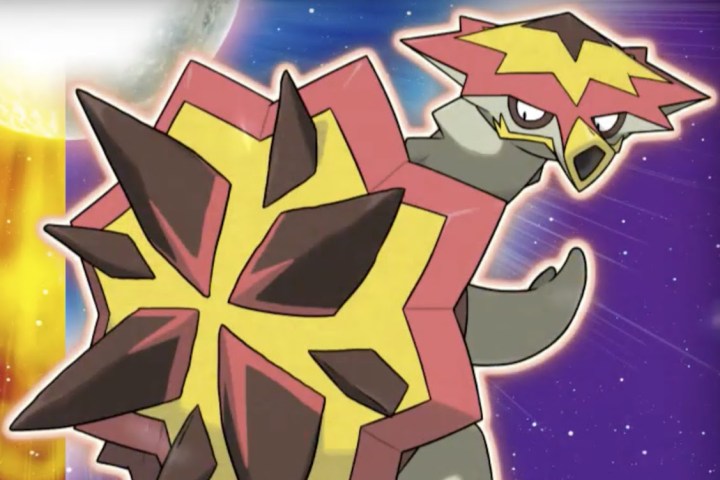The region of Alola was first introduced in Pokémon Sun and Moon. These games gave us new Pokémon as well as reinterpretations of Pokémon we know and love. Naturally, there are some Pokémon that are obviously better than others, but there are also a few Pokémon that no trainer would want to miss out on. Although these Pokémon aren’t necessarily the hardest to catch, it can be difficult to track them down.
Luckily, we’ve compiled a list of the 10 most difficult-to-find Pokémon. Hopefully, this will make your training a little easier. Rather than blindly searching for these elusive Pokémon, we have the location of each one and the best tactics for finding them.
Further reading
- The best Pokémon Go tips and tricks
- The 25 best Nintendo 3DS games
- Pokémon Sword and Shield transform gym battles into a really big deal
Munchlax and Happiny: Route 1

Munchlax, the baby form of the formidable Snorlax, can be caught extremely early in the game. Munchlax can be found in the patches of grass directly to the right of your house on Melemele Island. It’s an exceptionally rare encounter, but it’s in there.
Happiny, the unevolved form of Chansey, can also be caught on Route 1, but only during SOS battles (battles where the Pokémon has called for help). Rumor has it that wild Bonsly are most likely to summon a Happiny to help.
Bagon: Route 3

The dragon Pokémon that eventually evolves into the fearsome Salamance can be found more easily later in the game, but you can run into it very early on Melemele Island (the first island). There’s a single patch of grass on Route 3 to the right of the bridge that leads back to Route 1. Its encounter rate is insanely low, but if you’re determined to have a Salamance on your team right at the start, it is possible.
Passimian/Oranguru: Lush Jungle

The twin (fraternal, not identical) new monkey Pokémon can be found early on, on the second island in Lush Jungle. Passimian only appears in Sun and Oranguru in Moon. They’re both extremely rare encounters in their respective games. All you can do is keep hunting.
Feebas: Brooklet Hill

When it was introduced in generation 3 (Pokémon Ruby and Sapphire), Feebas was insanely hard to catch. Now, it’s just a matter of beating the odds while fishing at Brooklet Hill. Look for fishing spots with bubbles coming out of them to improve your odds of finding the weird fish that evolves into the beautiful Milotic.
Vulpix/Sandshrew: Tapu Village

Vulpix (in Pokémon Sun) and Sandshrew (in Pokémon Moon) have been around in Pokémon forever. But in Alola, they get new typing, and they look awesome. They’re common on the path approaching the Elite Four, but you can actually get them much earlier than that. With a little patience, you can find them in the grass in Tapu Village on the third island.
Mimikyu: Thrifty Megamart

If you’ve progressed far enough in the story to catch a Mimikyu, then you’ll already know exactly where to get it. But an encounter with the powerful Pikachu wannabe is so rare within the abandoned supermarket that you might find yourself questioning whether it’s in there at all. Rest assured, it is — just keep fainting those Golbats and Haunters until your new best friend appears.
Jangmo-o: Vast Poni Canyon

Jangmo-o lives in the canyon on Poni Island and is your battle opponent once you arrive there. But like the other monsters on this list, it’s not easy to find this dragon-type Pokémon. You’ll have to search the grasses around the trial site or even crawl around under the nearby branches to find his hiding place.
Aerodactyl: Seafolk Village

Call it a quirky defect, but in Pokémon Sun and Moon, Pokemon cannot hide because all the different creatures willingly expose themselves. Just take the case of Aerodactyl, who has his cover blown by Seafolk Village inhabitants. Once you find the trainer in the Huntail boat, he’ll give you Aerodactyl for free, no strings attached. It’s definitely worth the trip to catch this Pokemon.
Dhelmise: Seafolk Village

We can safely say that Dhelmise is the strangest Pokemon fish you will encounter while on the hunt. Oddly enough, it’s not actually a fish, and it has ghost/grass typing instead of water typing. Regardless of all that, you can only catch the ghostly anchor when you’re fishing in Seafolk Village. Try to cast your line in bubbly spots because that means something’s below the surface; however, bubbles don’t guarantee you’ll find Dhelmise due to its low encounter rate.
Drampa and Turtonator: Mount Lanakila/Blush Mountain

After you catch the legendary Pokemon, make sure you catch Dramp and Turtonator. These two Pokemon are Sun/Moon exclusives you don’t want to miss. Drampa, the Moon exclusive and dragon/normal type, can be found on Mount Lanakila; Turtonator, the Sun exclusive and dragon/fire type, is on Blush Mountain.
Have fun hunting for these Pokemon.
Editors' Recommendations
- The best Power Armor in Fallout 4 and where to find each set
- The best weapons in Fallout 4 and where to find them
- All upcoming Switch games: 2024, and beyond
- Where to find the bookseller in Stardew Valley
- How to transfer data from Nintendo Switch to Switch OLED

